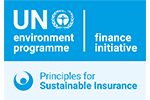Climate change is one of the most significant and complex risks facing society today. It is one of the risks Sun Life manages within our overall RMF.
We continue working to better understand potential climate-related risks and to improve our resilience against them. There are two major categories of climate-related risks:
- Physical risk: risks related to physical impacts of climate change, including event-driven acute physical risks, for example more severe weather events and chronic physical risks from longer-term shifts in climate patterns. Indirectly, these risks can also create additional impacts on public health (e.g., increased morbidity and mortality).
- Transition risk: risks related to the transition to a lower-carbon economy. This includes policy, legal, technology and market changes to address the need to reduce and adapt to climate change, and related reputation risk.
Our definition of climate risk includes impacts in both of these categories. These impacts can include, but are not limited to, damage to owned and operated real assets including real estate and infrastructure, reductions in the values of investments in public and private fixed income and non-fixed income assets tied to fossil fuels and carbon intensive industries, litigation risk to a company or sector in which we invest, health impacts to affected populations, and socio-economic, geopolitical and regulatory changes.
Our approach to addressing climate change risk also involves strengthening our ability to evaluate and report on related impacts. We provide climate disclosures guided by the recommendations of the Task Force on Climate-related Financial Disclosures (TCFD). These disclosures help investors and other stakeholders assess how Sun Life is tackling potential climate-related impacts on our business. We also conduct an assessment of climate change risk as part of our broader assessment of the risks associated with operating in various markets.
Learn more:







